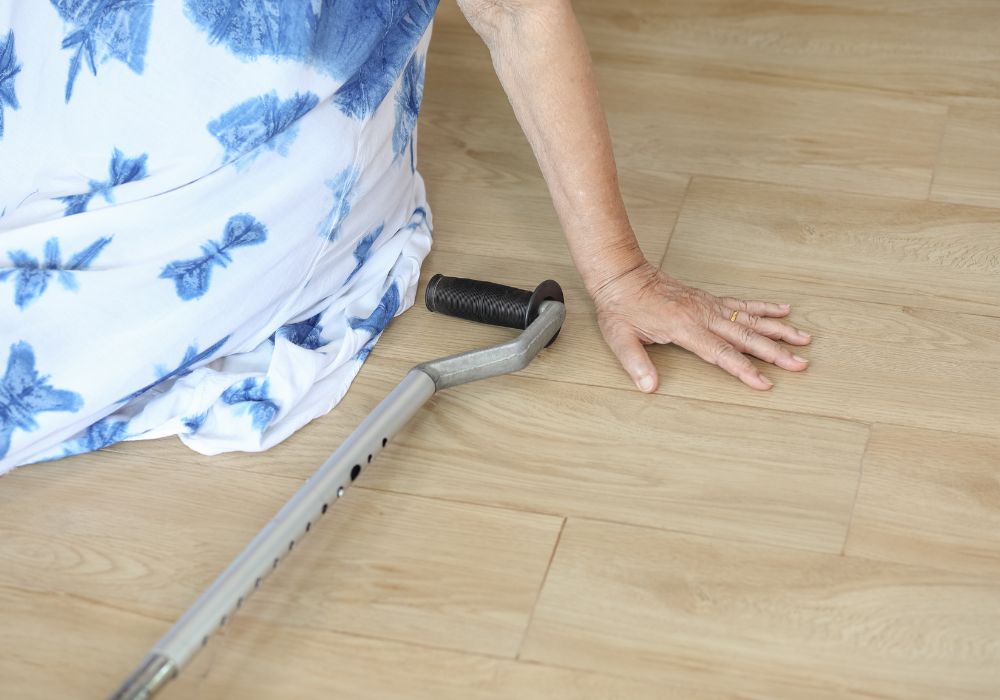
Falls are one of the most common causes of injury among seniors, leading to serious physical and emotional consequences. For older adults living at home, creating a fall prevention plan is essential for maintaining safety and independence. At Comfort Keepers Rochester, we believe that proactive steps can make all the difference in helping seniors avoid falls and stay safe in their homes. In this article, we’ll discuss effective strategies and tips for developing a comprehensive fall prevention plan to protect seniors and give families peace of mind.
Why Fall Prevention is Important for Seniors
As people age, physical changes, chronic health conditions, and certain medications can make falls more likely. The impact of a fall can range from minor bruises to more severe injuries, such as fractures or head trauma, which may lead to hospitalization or extended recovery periods.
- Common Causes of Falls: Factors like reduced muscle strength, impaired vision, poor balance, and hazards in the home contribute to fall risks.
- Health Consequences: Falls can lead to mobility issues, loss of independence, and even mental health challenges, such as anxiety about future falls.
By addressing these risks, families can help seniors remain active, safe, and confident in their own homes.
Steps to Creating an Effective Fall Prevention Plan
1. Conduct a Home Safety Assessment
The first step in preventing falls is to ensure that the senior’s living environment is safe. A home safety assessment identifies potential hazards and areas that may need modifications.
- Tips for a Safe Home:
- Remove loose rugs, electrical cords, and clutter that could cause tripping.
- Install grab bars in the bathroom near the toilet and shower.
- Ensure that staircases have sturdy handrails on both sides.
- Use non-slip mats in the bathroom and kitchen.
2. Improve Lighting in Key Areas
Proper lighting is essential for seniors to navigate their home safely. Poor lighting can lead to accidents, especially during nighttime trips to the bathroom or kitchen.
- Lighting Tips:
- Install nightlights in hallways, bathrooms, and bedrooms.
- Use bright, energy-efficient bulbs that provide clear visibility.
- Place light switches within easy reach, and consider using motion-sensor lights in frequently used areas.
3. Encourage Daily Exercise for Strength and Balance
Regular physical activity can improve strength, flexibility, and balance, all of which are crucial for fall prevention. Encourage seniors to engage in safe exercises that build muscle and coordination.
- Recommended Exercises:
- Gentle stretching exercises to maintain flexibility.
- Balance exercises, such as standing on one foot or practicing heel-to-toe walking.
- Strength training exercises, such as light weightlifting or resistance band exercises.
4. Review Medications with a Healthcare Provider
Certain medications can cause dizziness, drowsiness, or lowered blood pressure, increasing the risk of falls. Seniors should regularly review their medications with a healthcare provider to understand possible side effects and adjust as needed.
- Medication Safety Tips:
- Ensure all medications are taken according to the prescribed instructions.
- Ask the healthcare provider about possible interactions between medications.
- Monitor for any new or unusual side effects and report them promptly.
5. Invest in Assistive Devices and Mobility Aids
Assistive devices such as canes, walkers, and grab bars can significantly improve mobility and reduce fall risks for seniors with balance or mobility issues.
- Choosing the Right Devices:
- Consult with a physical therapist or occupational therapist to determine the most suitable aids.
- Use devices that are well-fitted and easy for the senior to handle.
- Encourage seniors to use their assistive devices consistently, even if they feel stable without them.
Creating Safe Routines and Habits
1. Practice Safe Movement Techniques
In addition to using assistive devices, seniors can benefit from practicing safe movement habits to reduce their risk of falling. These habits encourage mindful movement and awareness of potential hazards.
- Movement Tips:
- Stand up slowly from sitting or lying positions to avoid dizziness.
- Hold onto stable surfaces or handrails when moving around the home.
- Avoid carrying items in both hands while walking; instead, use a small bag or basket if needed.
2. Keep Frequently Used Items Within Easy Reach
Reaching for items on high shelves or bending down to low drawers can increase the risk of falls. By organizing the home and keeping essential items easily accessible, seniors can reduce unnecessary strain.
- Organization Tips:
- Store frequently used items, such as kitchen utensils, medications, and personal care products, within easy reach.
- Use lightweight step stools with handles, if needed, and ensure they are stable.
- Rearrange furniture to create wide, clear pathways for easy navigation.
3. Wear Supportive, Non-Slip Footwear
Proper footwear can significantly reduce the risk of slips and falls, especially on smooth or slippery surfaces. Encourage seniors to choose shoes that provide stability and grip.
- Footwear Tips:
- Choose shoes with non-slip soles and low, stable heels.
- Avoid walking in socks or loose-fitting slippers, as they can increase the risk of slipping.
- Replace worn-out shoes regularly to maintain proper support.
4. Stay Hydrated and Maintain a Balanced Diet
Good nutrition and hydration can impact balance and coordination, particularly in older adults. Dehydration and low blood sugar levels can cause dizziness and weakness, which may lead to falls.
- Nutrition Tips:
- Encourage regular hydration throughout the day, with water or hydrating foods like fruits and vegetables.
- Ensure meals are balanced, including sources of protein, whole grains, and plenty of vitamins and minerals.
- Avoid excessive caffeine or alcohol, as they can lead to dehydration.
Involving Family Members and Caregivers in Fall Prevention
Family members and caregivers play a vital role in supporting seniors’ safety at home. By working together to identify and address potential risks, families can create a secure environment that promotes independence.
- Support Tips:
- Conduct regular home safety assessments with the senior and make adjustments as needed.
- Encourage open communication about any concerns or recent falls.
- Consider professional in-home care services, such as those offered by Comfort Keepers Rochester, to provide added safety and assistance.
How Comfort Keepers Rochester Can Help
At Comfort Keepers Rochester, we are dedicated to helping seniors live safely and independently in the comfort of their own homes. Our caregivers are trained in fall prevention strategies, providing assistance with mobility, personal care, and daily activities. We work closely with families to create customized care plans that meet each senior’s unique needs, ensuring they remain secure and comfortable in their familiar surroundings.
Final Thoughts
Falls can have serious consequences for seniors, but a proactive fall prevention plan can significantly reduce these risks. By assessing the home for hazards, encouraging safe routines, and involving family and caregivers, seniors can enjoy a safer, more independent lifestyle. At Comfort Keepers Rochester, we are committed to helping seniors and their families create a secure and supportive home environment. Contact us today to learn more about our in-home care services and how we can assist with fall prevention.









